This is How to Sell Without Being Sleazy: Brand Strategy & The Core Human Needs

If you’re a sensitive seller, and not the used-car salesman type, you probably have some hangups around the sales process. You might rarely promote your product or service- meaning you’re probably not making nearly as many sales, and impacting nearly as many lives, as you could. But there’s a solution, and it’s the way all businesses should be selling- by addressing the core human needs.
Once you start showing the value of your brand in a way that will impact the lives of your customers, you won’t need to worry about feeling icky, and you’ll have a more successful business.
Addressing the core human needs is an essential step in our brand strategy service; it’s something we develop for each and every one of our clients. Here’s some insight into the process.
The Eight Core Human Needs
People buy for a reason.
And it isn’t because they’re in your sales funnel.
And it isn’t because they saw your Facebook ad.
Honestly, most people buy on pure emotion, and it all goes back to your high school psych class.
The core human needs, in regards to how people behave (and how they buy), is all rooted in Maslow’s Hierarchy of Needs.
There’s been countless research into turning Maslow’s hierarchy into needs that drive human behavior. Tony Robbins says there’s six, while others argue that there are seven.
We’re going to shake things up and say there are eight.
- Security (having your needs met and feeling in control)
- Freedom (the need for change, variety, and adventure)
- Identity (feeling like you matter and are unique and special)
- Connection (feeling linked)
- Love (feeling deeply cared for/empathy)
- Creation (bringing something into existence)
- Growth (expansion of ability/mastery)
- Contribution (becoming a part of something bigger)
When you weave one or more of these core human needs into your brand strategy, you’ll be hitting what people are craving- what they’re seeking in life. And there’s nothing sleazy about that.
But this goes far beyond sprinkling one here and there into a marketing campaign. The core human needs you choose for your brand should be an integral part of your brand strategy and positioning.
You won’t just throw the word “love” or “growth” around in your copy because you know it’s what people are looking for. You’ll use these needs in every brand touchpoint to create an experience rooted in your values.
Let’s dig in!
Core Human Need #1: Security
On the surface, this is a fairly low-level need.
It’s why people buy security systems and will often pay top dollar.
It’s why soccer mom’s love Suburbans and why we pay for insect control every month.
Anyone in the health and wellness space needs to lean into security- people want to know products are safe.
When I recently bought some cannabis oil to help fight my rosacea, I wanted to make sure it wouldn’t have any crazy side effects.
And when COVID-19 broke out and my anxiety was at its highest, I invested in a high-quality weighted blanket to help me sleep.
So even in the lifestyle industry, security has its place.
Security is the reason people read reviews, testimonials, and case studies and love referrals and recommendations from friends. They want to know that whichever product or service they buy from can be a trusted investment.
The Security Brand Strategy Spotlight: Beautycounter
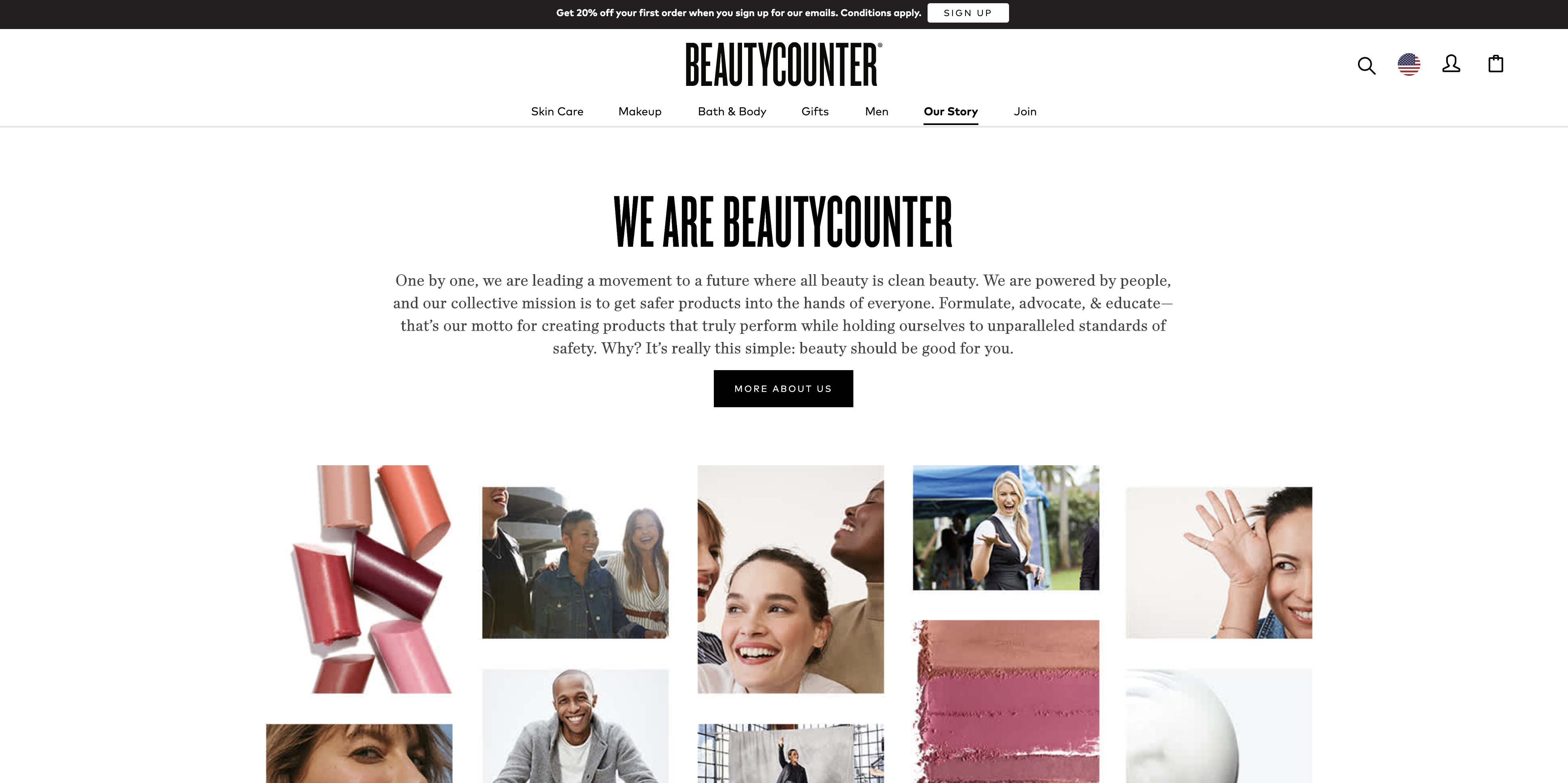
When you think security, you might not always think of makeup.
But the makeup industry is full of toxic chemicals and heavy metals, and we slather those babies all over our face on the daily.
Beautycounter’s mission is to “get safer products into the hands of everyone,” and they believe that “beauty should be good for you.”
They make the safety of their products, and the education of their consumers, a top priority. You can see this in their public Social Mission report, as well as a list of products they never use.
They’ve used the brand strategy power play of being the most popular beauty brand in a relatively new category to become the leader in the clean beauty industry.
But Beautycounter doesn’t just rely on security. With a large number of brand advocates, Beautycounter leans into identity. I’m sure you’ve seen Instagram post after Instagram post of tribal posts from loyal Beautycounter customers.
Beautycounter also leans into contribution by advocating for “stricter guidelines and regulations to shift the personal-care industry away from using harmful and questionable ingredients.”
There’s nothing sleazy about selling this product!
Core Human Need #2: Freedom
Humans love variety. We hate the monotony of everyday life.
That’s why Nathan owns a Jeep Wrangler- he’s free to break away and go basically wherever the law will let him.
We like to be in charge of our own destiny and love a chance to get away.
We’re easily bored, so iTunes and Spotify have given us easy ways to determine our mood, playlist by playlist.
Lifestyle and hospitality brands thrive when addressing the core human need for freedom.
When I buy a pair of Aviator Nation pants, not only do I have the variety to choose from just about any color, I also know that I can wear them anywhere- around the house, out to lunch, to the beach, and still look great. And they’re a nice escape from the formal wear I normally wear.
Visitors to a five-star hotel aren’t paying for the room. They’re paying for the stress-free experience and amenities (think variety). They’re paying for an escape from the everyday world.
The Freedom Brand Strategy Spotlight: Pieology
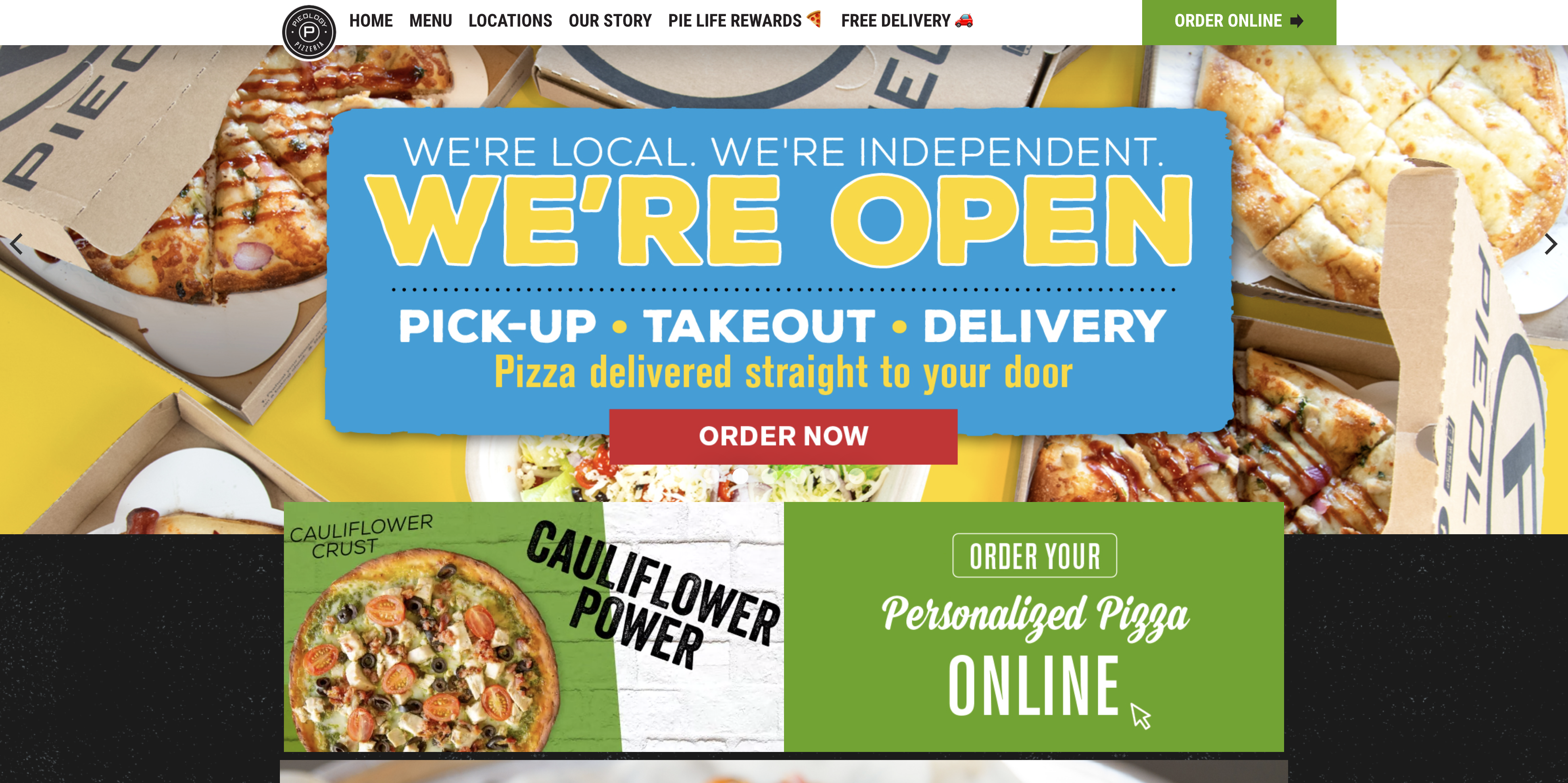
Yep, we chose a pizza company.
Because seriously- there’s nothing worse than having a preset menu where you aren’t free to have the exact pizza you want.
We take pizza very seriously.
Want a cauliflower cust? Pieology’s got you covered.
Unlimited topping? No problem.
A bit of after-bake sauce. Of course!
At Pieology you are free to have your pizza however you like with a wide variety of options.
You also get to watch your pizza assembled (which leans into both security and creation) and their community table are great for connecting with your favorite people over a slice.
Remember- it’s not all about meeting just one core human need with your brand strategy. It’s about finding your human needs secret sauce.
Core Human Need #3: Identity
Are you a Mac or a PC?
Pepsi or Coke?
In-n-Out or Whataburger?
SUV or roadster?
Let me tell you- I’m a Mac-loving, Coke drinking, In-n-Out eating, Mini Cooper driving lady.
Humans love being part of tribes because tribes help shape their identity.
And having a unique identity is a core human need that every lifestyle brand needs to tap into.
It’s why some people spend their money on Gucci and others on Lilly Pulitzer.
When does identity not come into play? When your product is a commodity (think paper napkins) or you’re trying to be the cheapest date in town (think leggings at Walmart).
So what I’m trying to say is, if you want people to care about your brand and spend money with you, you need to appeal to a sense of identity.
The Identity Brand Strategy Spotlight: Funko
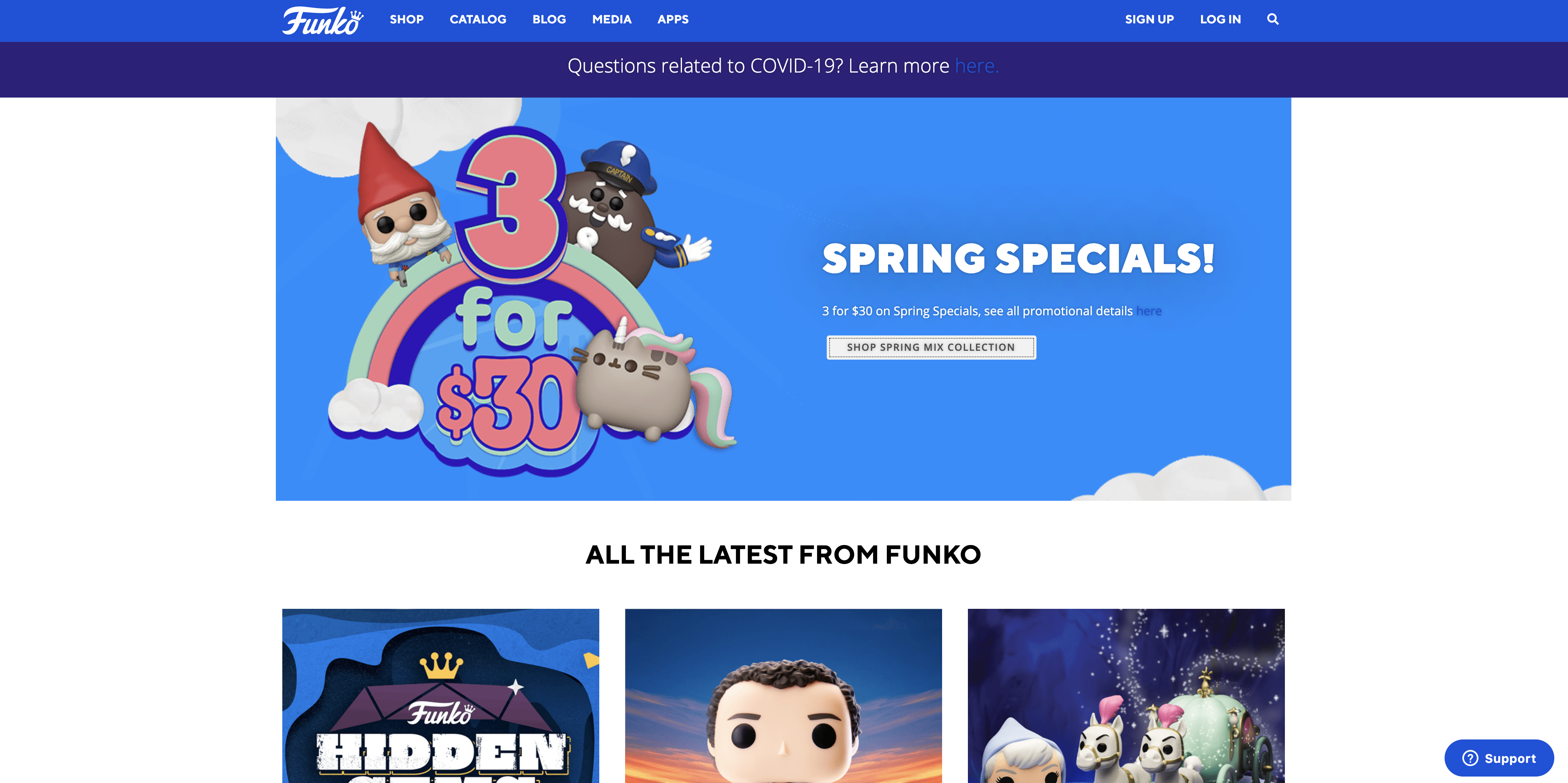
Everyone is a fan of something.
At least, that’s Funko’s motto.
Think about it- fandoms are everywhere.
People love identifying themselves with their favorite superheroes.
People love waving their freak flag.
There’s something about pop culture and aligning to certain characters and series that taps into our sense of identity.
As I write this, I’m surrounded by our Funko collection.
Nathan’s shelves are sci-fi-licious. We’re talking Alien, Doctor Who, Star Wars, Jurassic Park, and The Matrix.
And my shelves- they’re a bit different. I’ve got my Carmen Sandiego, Jem, Alfred Hitchcock, David Bowie, and Silver Surfer. Jessica Fletcher is due to arrive in a few weeks and I’m eagerly anticipating a Columbo- you’ve been told, Funko!
These fun little fellas tell the story of where we came from and our identities as humans. What makes us tick. But they also help us connect with other like-minded people in a community where growing up and being an adult doesn’t mean getting rid of our childhood.
We love Funko!
Core Human Need #4: Connection
Right now we’re in the midst of the COVID-19 crisis, so you can imagine that connection is on people’s minds.
When you suddenly aren’t able to connect physically with the people you care about the most, you realize how big a need connection is.
Logically, internet companies and video communication companies, like Zoom, lean into society’s need for connect.
It’s why we dumped Frontier when they took over Fios and our internet was gone for over two weeks. Tribal identity meant nothing over connection in this instance.
It’s also why social media giants have received such backlash from the general public- how can we connect with the people we really care about with a faulty algorithm?
But people crave connection in all ways. Dating apps, meetups, social clubs, unplugged time with family
How does your brand bring people together? Weave that into your positioning!
The Connection Brand Strategy Spotlight: Hunt a Killer
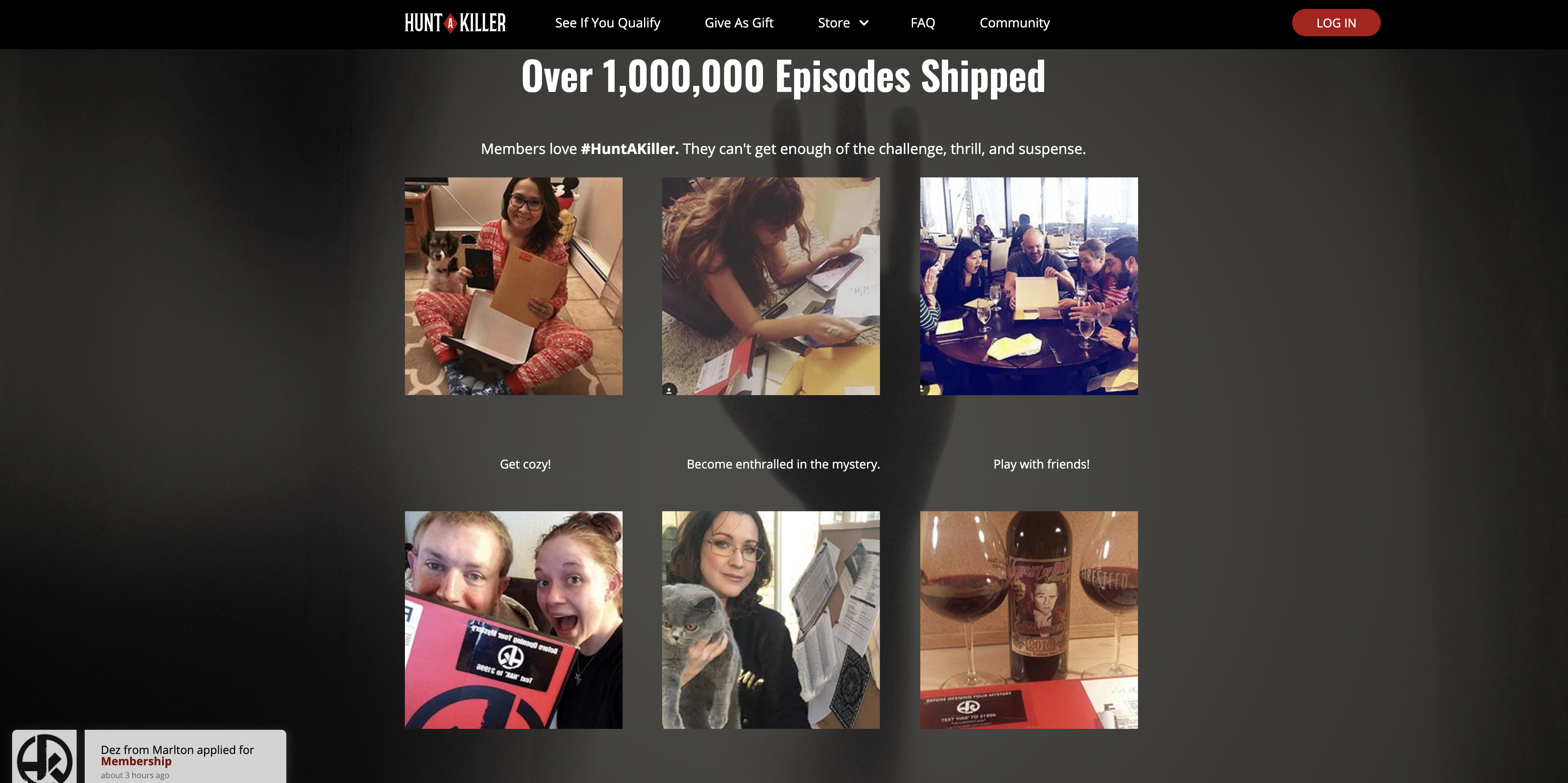
Now Nathan and I are not what you’d call social people.
So places like Punchbowl Social or large festivals aren’t exactly how we like to connect.
But what we do need is time with each other, unplugged.
No client talk, no screen time.
That’s why the primary brand strategy of Hunt a Killer shows happy pictures of families together, off their phones, solving a crime.
This fun monthly subscription delivers a mystery to your door with clues, emails, primary documents, interviews, with the sole purpose of tracking down a murderer together.
It’s like the ultimate game of clue. There’s even an online community you can solve the crimes with and get help from if you’re stuck.
Not all connection is about connecting with humanity as a whole. Sometimes it’s nice to just reconnect with the ones you love most. That’s why we love this product.
But there’s more than just connection.
With Hunt a Killer you can choose to get all the episodes at once or month-to-month. They also have boxed-sets, and a few that are kid-friendly. It’s also about freedom and variety.
And this product definitely appeals to the Murderino in me, tapping into that identity so well. I want to solve all the crimes!
Core Human Need #5: Love
I don’t know of any human who doesn’t want to be loved.
Even the most grumpy of people want to be loved, whether they want to admit it or not.
People love to be understood and cared for.
Brands in the beauty and wellness space thrive with love messaging. And while self-care is a huge trend right now, it’s because love is always trendy, no matter how cliche it may sound.
No matter what industry you’re in, you need to make sure love is part of your brand strategy.
How many hearts and balloons you add is up to you and your brand strategist.
The Love Brand Strategy Spotlight: Drybar
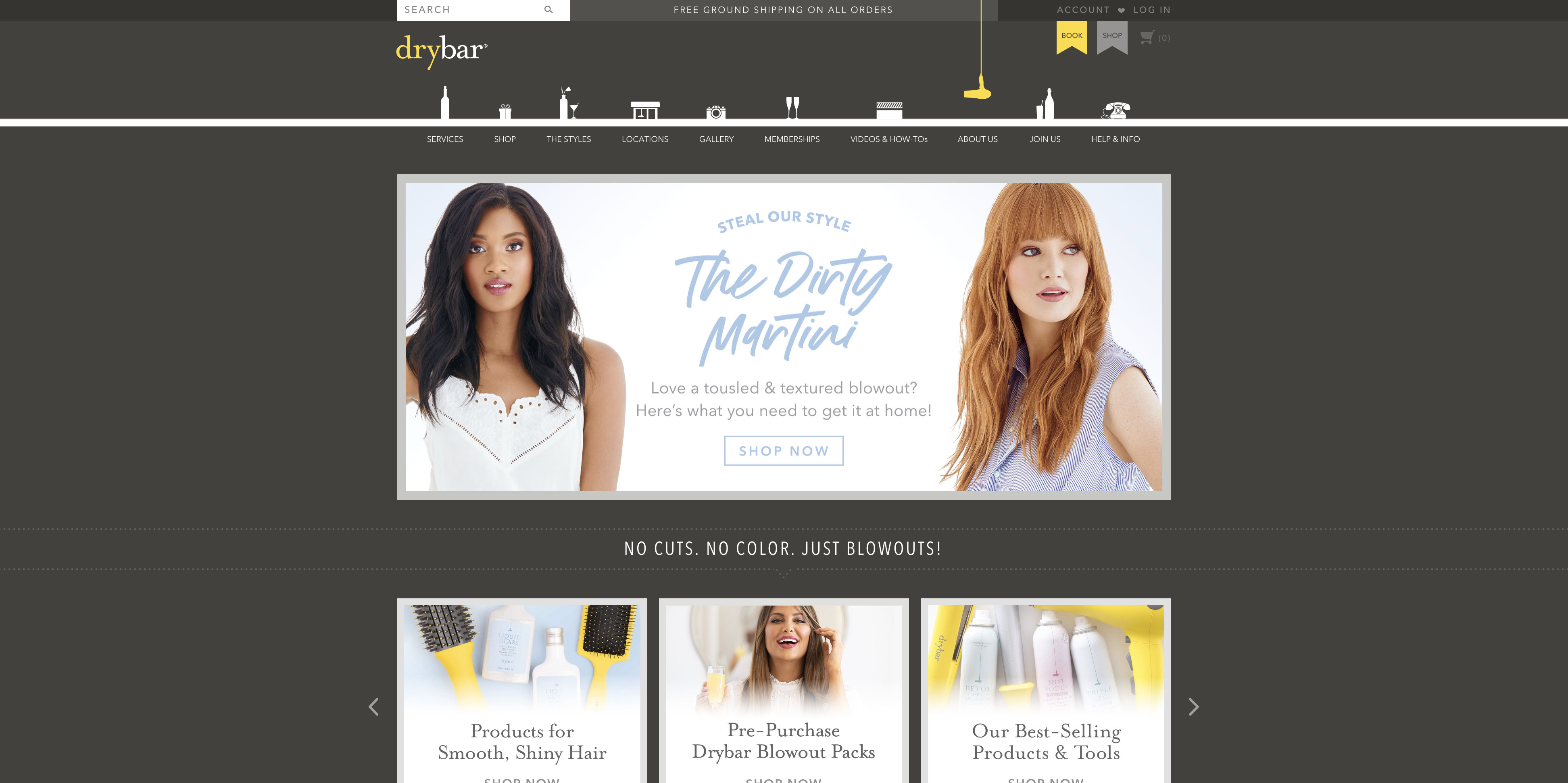
Oh how I love Drybar.
Because Drybar makes me feel loved.
I love my hair.
I love the cheesy rom coms they have on.
I love that they know I want a glass of champagne.
I love a good scalp scrub.
I love that they know I want good-smelling hair products.
I love that all of their products are named after adult beverages.
I love that I now know how to give myself a blowout at home.
But it’s not all Peace, Love, and Blowouts.
Drybar allows me the freedom of choosing different styles each time I go in for a bit of variety to match my mood, and with their Barfly membership and book, part of my identity is now “the girl with the good hair.”
Remember- find your core human needs secret formula!
Core Human Need #6: Creation
People love being early adopters.
This isn’t just a hipster thing. It’s a human thing.
The ability to say they were among the first- a futurist. Seeing the world and all its possibilities.
It’s why masses eagerly anticipate every new product launch from Apple.
Why gamers make sure they’re among the first to purchase the latest platform.
Why we love that we saw Imagine Dragons at a BINGO hall in San Bernardino before they were a thing.
Why I tracked the creation of my Mini Cooper on the internet months before it was delivered to the showroom.
Why Kickstarters are often so successful.
People love being a part of something new.
The Creation Brand Spotlight: Tesla
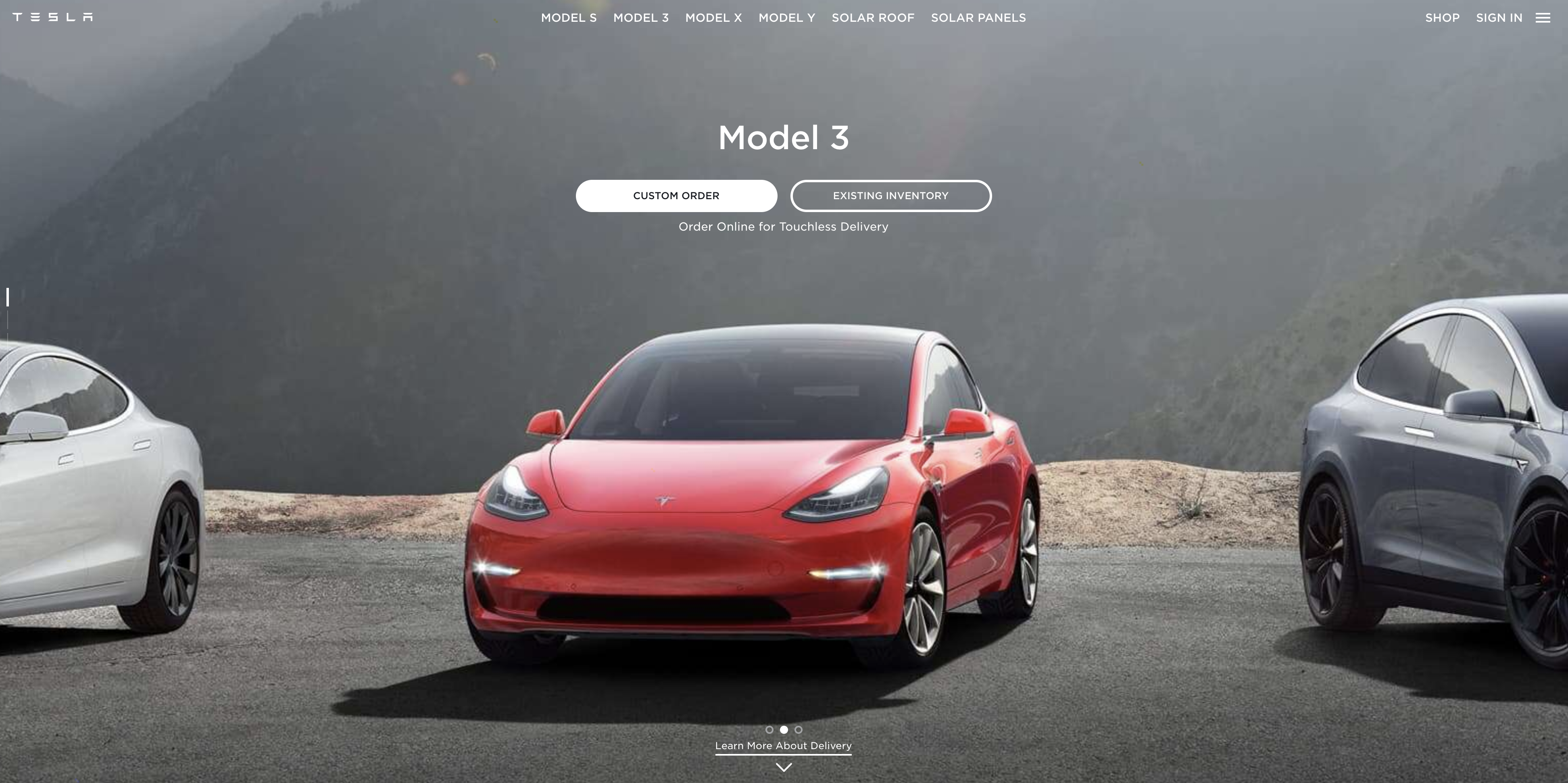
Tesla wasn’t the first in the electric car arena. But they became the most popular and gained the power position because of the futuristic messaging and visionary presentations of the founder, Elon Musk.
When you buy a Tesla, you’re not just buying any car. You’re a part of Musk’s vision for a better future that isn’t dependent on oil.
Yes, Tesla contributes to the environment, but you could just buy a Leaf.
So while Tesla remains the leader in the electric car industry (none of this hybrid stuff), they aren’t leaning into their environmental contribution alone. They’re relying on the creation of the latest models and a strong tribal identity to stay in the power position, even when production is slow and unpredictable.
Core Human Need #7: Growth
Physically, mentally, spiritually, financially, emotionally.
People strive to grow and become better versions of themselves.
People- and their businesses. So if you’re in a space where you help either individuals or businesses become the 2.0 version of where they currently are, then you’re going to lean into the core human need for growth.
This is the natural arena for gyms, yoga studios, and fitness centers.
Businesses in the wellness space, while also appealing to security, do well when addressing growth.
And any and all business services, tools, and programs need to address growth in their messaging.
But even if you help people become a better home baker, you’re helping people grow.
If you teach art lessons online, you’re helping people grow.
If you have an ebook helping people develop their personal style, you’re helping people grow into their ultimate potential.
The Growth Brand Strategy Spotlight: Headspace
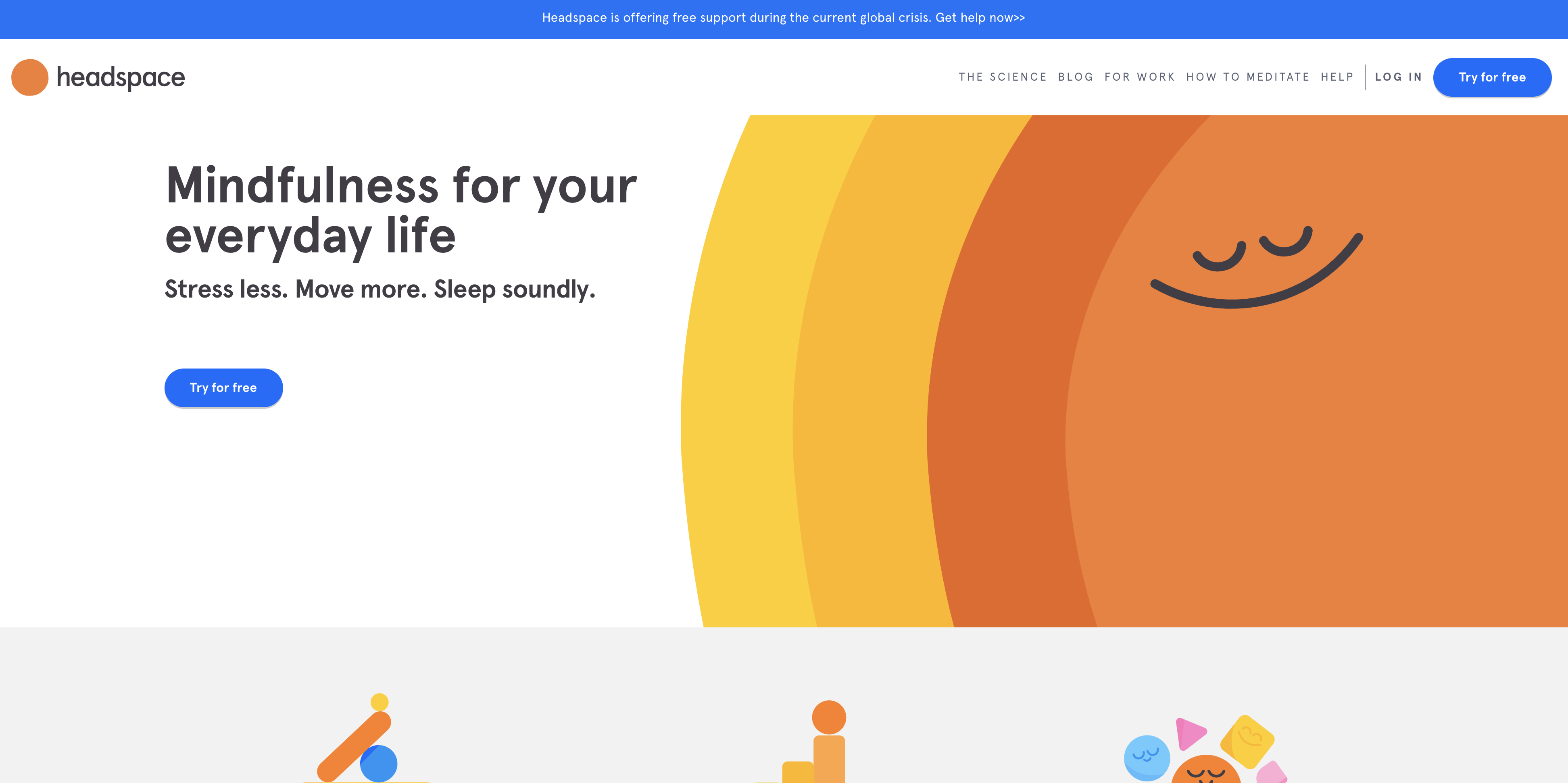
Want to become more mindful, move your body more, and become a better person for yourself and those around you?
Welcome the Headspace, a little phone app that provides guided meditations, movement work, and motivational videos to help you become a more mindful and focused person, all for just $9.99 a month.
We love Headspace- it’s the first thing I use when I get up in the morning before I even get out of bed and I can attest that it’s helped me become more focused and a better version of myself. I’m able to handle stress more easily, and they’re course on creativity has sparked many of the ideas you’ll find on our website.
But Headspace doesn’t just lean into growth. With a community of over 60 million people, you can connect with friends and meditate together.
During the COVID-19 crisis, Headspace started offering The Wake Up, a free series of daily mini meditations and inspiring stories. While contribution isn’t the main brand strategy for Headspace, it’s natural extension of its paid service during a time of crisis. I would imagine that without having more memberships become their end goal, and without advertising their paid plan once in The Wake Up, this free series has led to more memberships.
Headspace also provides a sense of security when your mind really needs it with their SOS meditations. From anxiety, anger, trouble sleeping, if your mind is in a crisis, they’ve got an SOS meditation to help. Their sleep series is fantastic- like a natural muscle relaxer.
Core Human Need #8: Contribution
When people’s own core needs have been met, there comes a natural urge to give back to others and the planet.
This is why buying a pair of Tom’s shoes or Warby Parker eyeglasses feels good, and is worth the extra price.
And why so many people are moving towards hybrid and electric cars or becoming vegetarian or vegan.
Only a troll would say a brand rooted in a social or environmental cause is sleazy for selling, because for every sale they make, an impact is made.
The Contribution Brand Strategy Spotlight: Patagonia
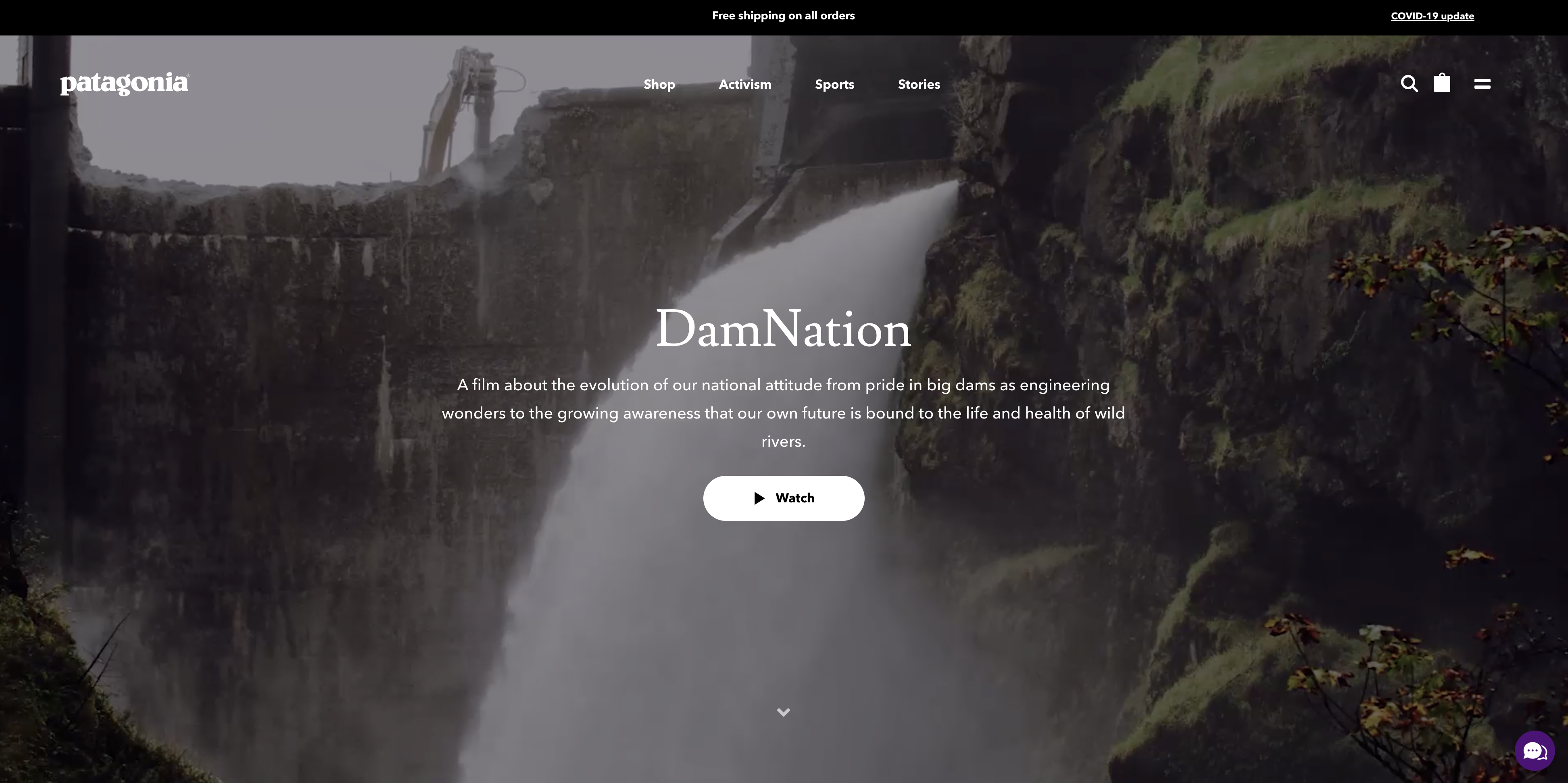
Patagonia’s activism is such a core part of who they are as a brand that when you get to their website, they aren’t selling their products.
They’re showcasing their latest documentary.
Most of the links in the main navigation and footer aren’t about selling adventure gear.
It’s about all of their causes and initiatives.
When you think Patagonia, you think giving back.
We could go on about how they give back- but that would fill many more articles.
It’s just who they are.
But it’s more than that.
Even if you don’t care about the environment, you know that when you buy a Patagonia windbreaker, it’s going to last a lot longer than the cheap-o from Wal-Mart. It’s a more secure investment.
And that windbreaker is going to be so lightweight and durable that it’s going to allow you the freedom to wear it on long hikes without bogging you down.
And you become to identify yourself with Patagonia. You’ll pass on other brands. Your part of a like-minded, loyal tribe.
Patagonia checks off so many of the boxes of why people buy. And I’ve never seen them advertise and have never been a part of their sales funnel.
How to Use the Core Human Needs in Your Brand Strategy
It all starts with your customers.
Why do they buy? What do they need?
Not every product naturally lends itself to each core human need, so it’s important to do some deep digging into what makes your customer base tick.
This isn’t something that should be done in a quick afternoon lunch break, and isn’t something you can do with a simple worksheet download.
When we work with out clients on brand strategy, the section we often spend the most time with is developing user profiles.
Because without user profiles, you’re taking a shot at the dark at both who your customers are and what drives their behavior.
So do a deep dive into your customer profiles, determine which core human needs you’ll lean into with every touch point of your brand, and stop feeling so sleazy about selling!


